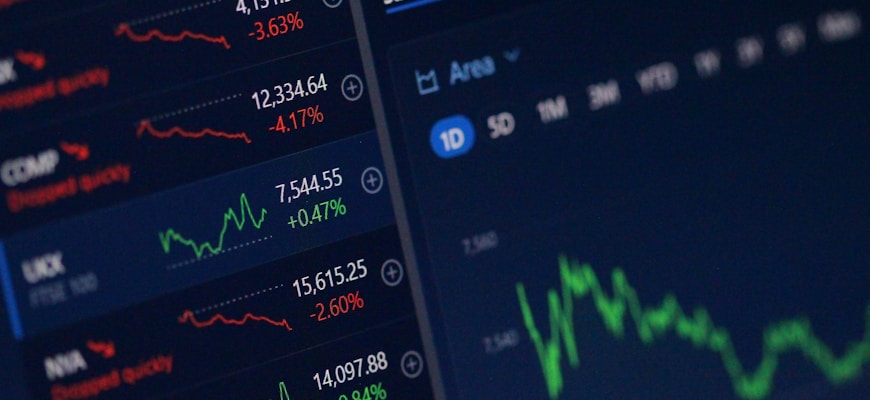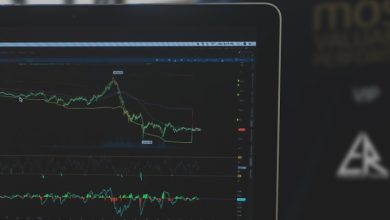How to Use Technical Analysis for Crypto Market Insights

- Understanding the basics of technical analysis
- Key indicators to watch for in crypto market analysis
- Using chart patterns to predict market movements
- Implementing moving averages for trend identification
- Utilizing support and resistance levels for trade decisions
- Combining technical analysis with fundamental analysis for comprehensive insights
Understanding the basics of technical analysis
Technical analysis is a method used to evaluate investments and identify trading opportunities by analyzing statistical trends gathered from trading activity, such as price movement and volume. In the context of the crypto market, technical analysis can help investors make informed decisions based on historical data and market behavior.
One of the basic principles of technical analysis is the belief that historical price action tends to repeat itself, allowing analysts to predict future price movements. By studying charts and patterns, investors can identify trends and patterns that may indicate potential buy or sell signals.
Common tools used in technical analysis include moving averages, support and resistance levels, and various technical indicators like the Relative Strength Index (RSI) and Moving Average Convergence Divergence (MACD). These tools help investors interpret market data and make informed decisions about when to enter or exit a trade.
Key indicators to watch for in crypto market analysis
When conducting a technical analysis of the crypto market, there are several key indicators that traders should pay close attention to in order to gain valuable insights. These indicators can help to identify trends, potential price movements, and overall market sentiment.
- One important indicator to watch for is the moving average, which helps to smooth out price data and identify the direction of the trend. Traders often look for crossovers between short-term and long-term moving averages as a signal of a potential trend reversal.
- Another key indicator is the relative strength index (RSI), which measures the speed and change of price movements. An RSI above 70 may indicate that a cryptocurrency is overbought, while an RSI below 30 may suggest that it is oversold.
- Volume is also a crucial indicator to consider, as it can provide insight into the strength of a price movement. High volume during an uptrend or downtrend can help to confirm the validity of the trend, while low volume may indicate a potential reversal.
- Support and resistance levels are important indicators that can help traders identify key price levels where a cryptocurrency may struggle to break through or bounce back from. These levels can provide valuable entry and exit points for trades.
- Finally, the Moving Average Convergence Divergence (MACD) is a popular indicator that helps to identify changes in a cryptocurrency’s momentum. Traders often look for crossovers between the MACD line and signal line to confirm trend reversals.
By closely monitoring these key indicators, traders can gain a better understanding of market dynamics and make more informed decisions when trading cryptocurrencies. It is important to use a combination of indicators to confirm signals and avoid relying on any single indicator for trading decisions.
Using chart patterns to predict market movements
One of the most popular methods for predicting market movements in the crypto world is by using chart patterns. These patterns can provide insights into potential future price movements based on historical data. By analyzing these patterns, traders can make informed decisions about when to buy or sell their assets.
Chart patterns come in various forms, such as triangles, head and shoulders, double tops, and flags. Each pattern indicates a different potential outcome for the market. For example, a head and shoulders pattern typically signals a trend reversal, while a triangle pattern suggests a continuation of the current trend.
Traders can use these patterns to set entry and exit points for their trades, as well as to determine stop-loss levels to minimize potential losses. By combining chart patterns with other technical analysis tools, such as moving averages and volume indicators, traders can increase their chances of making profitable trades in the volatile crypto market.
It is important to note that chart patterns are not foolproof and should be used in conjunction with other forms of analysis. Market sentiment, news events, and external factors can all impact the price of cryptocurrencies. However, by incorporating chart patterns into their trading strategy, traders can gain a better understanding of market dynamics and improve their overall trading performance.
Implementing moving averages for trend identification
Moving averages can be a valuable tool for identifying trends in the crypto market. By calculating the average price of a cryptocurrency over a specific time period, moving averages can smooth out price fluctuations and highlight the overall direction of the market.
There are two main types of moving averages that traders commonly use: the simple moving average (SMA) and the exponential moving average (EMA). The SMA gives equal weight to each data point in the calculation, while the EMA places more emphasis on recent prices.
Traders often use moving averages to determine the strength and direction of a trend. When the price of a cryptocurrency is above its moving average, it is generally considered to be in an uptrend. Conversely, when the price is below the moving average, it is typically seen as being in a downtrend.
By using moving averages in conjunction with other technical analysis tools, traders can gain valuable insights into the market and make more informed trading decisions. It is important to note that moving averages are lagging indicators, meaning they reflect past price action rather than predicting future movements. As such, they should be used in conjunction with other forms of analysis to confirm trends and potential entry or exit points.
Utilizing support and resistance levels for trade decisions
Utilizing support and resistance levels can be crucial when making trade decisions in the crypto market. Support levels are price points where a downtrend can be expected to pause or reverse, while resistance levels are where an uptrend may stall or reverse.
By identifying these levels on price charts, traders can determine potential entry and exit points for their trades. When the price approaches a support level, it may be a good time to buy, as there is a higher likelihood of the price bouncing back up. On the other hand, when the price nears a resistance level, it may be a signal to sell, as the price may struggle to break through that level.
It is important to remember that support and resistance levels are not set in stone, and they can shift over time as market conditions change. Traders should use other technical indicators and analysis tools in conjunction with support and resistance levels to make well-informed trade decisions. By combining different strategies, traders can increase their chances of success in the volatile crypto market.
Combining technical analysis with fundamental analysis for comprehensive insights
Combining technical analysis with fundamental analysis can provide a more comprehensive understanding of the crypto market. While technical analysis focuses on historical price data and trends, fundamental analysis dives into the underlying factors affecting the value of a cryptocurrency.
By integrating these two approaches, investors can gain deeper insights into the market dynamics and make more informed decisions. Technical analysis can help identify entry and exit points based on price patterns and indicators, while fundamental analysis can assess the project‘s technology, team, partnerships, and overall market potential.
For example, if technical analysis signals a bullish trend, but fundamental analysis reveals concerns about the project‘s development progress, investors may reconsider their investment decision. Conversely, if both analyses align and indicate a positive outlook, investors may have more confidence in their trading strategy.



